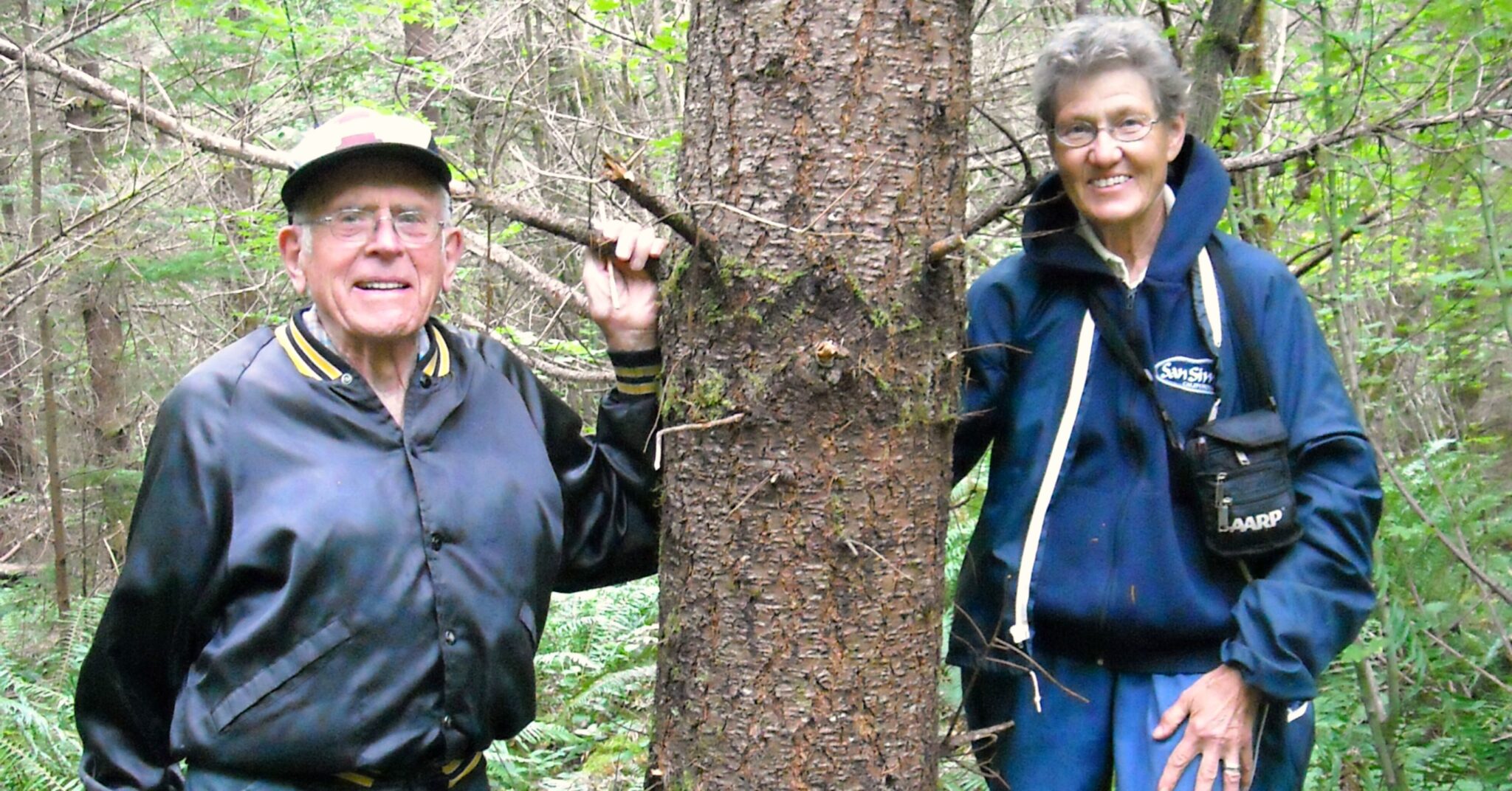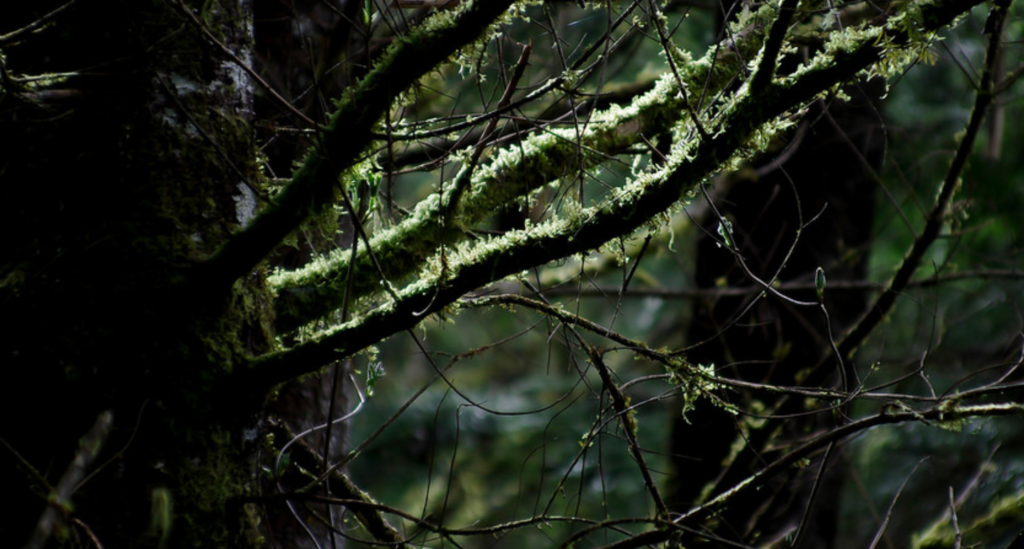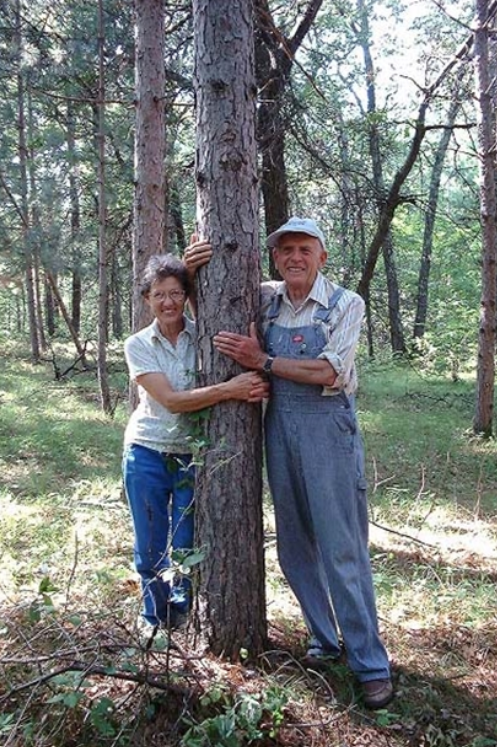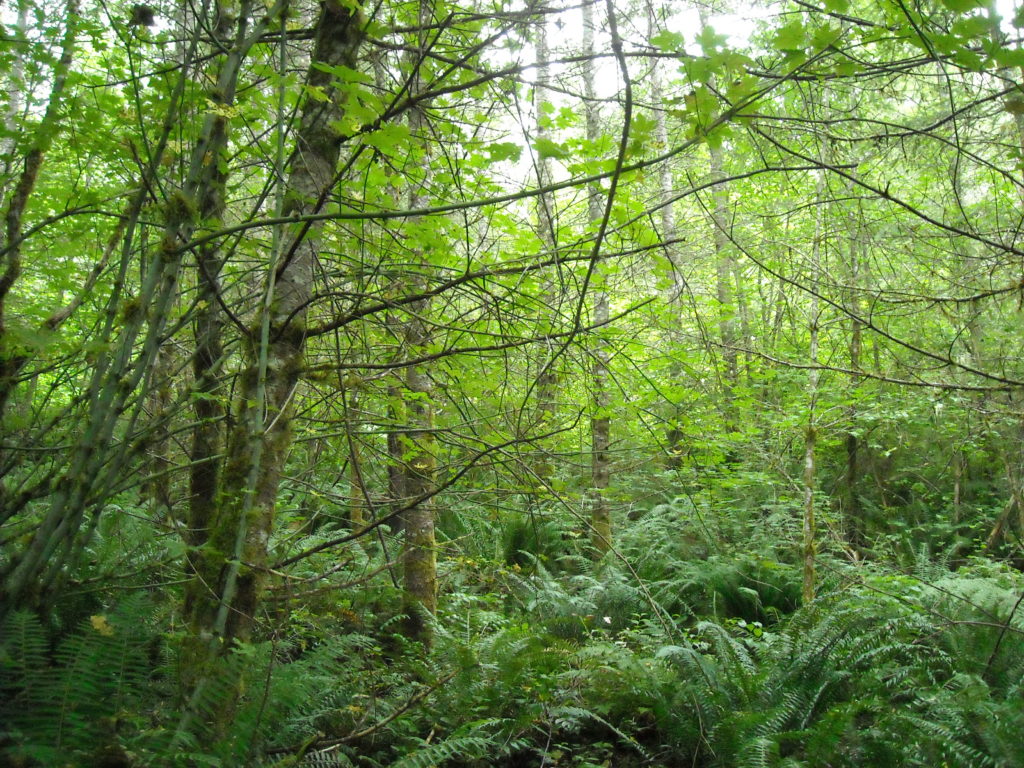Sometimes, a forest just needs a little TLC (Thinning, Love, and Cost-share reimbursement)

As lifelong forest owners Rod and Diana Hanson were no strangers to land stewardship when they bought 70 acres near Black Diamond, WA in 2011.
But the forest they purchased was a far cry from their vision of a mixed-species, mixed-age, biologically rich ecosystem that could also yield valuable wood products.
The property had previously been owned by an industrial timber company that managed the land for short-term economic returns. The company had clearcut the property in the early 1980s and densely re-planted it all with Douglas-fir, the most commercially valuable species in our region. Several Douglas-fir stands were dark and dense with little life in the understory. The live crowns of the Douglas-fir had receded to less than 40 percent of the total tree height — indicating that their forest was overstocked for its age, and the trees were becoming stressed from the competition.

The live crowns of the Douglas-fir had receded to less than 40 percent of the total tree height.
With the twin goals of wildlife habitat and harvest in mind, the Hansons applied for EQIP funding to create a forest management plan that would guide their management decisions for the next few decades.
The Environmental Quality Incentives Program (EQIP) is a cost-share reimbursement program managed by the USDA’s Natural Resources Conservation Service. “Cost-share” means that a government entity invests in a portion of the expenses of conservation practices by reimbursing landowners for a percentage of agreed-upon costs. For example, forest owners use EQIP to pay for materials, equipment, consultants, and labor to complete a conservation or forest stand improvement activity.

The EQIP funding awarded to the Hansons allowed them to hire a consulting forester from NNRG to guide them in writing a forest management plan (known in EQIP terms as a Conservation Activity Plan, or CAP).
The process included writing down what was important to them and what they wanted to accomplish. It also entailed a stand-by-stand inventory that identified forest health concerns.
The Hansons determined that thinning the forest would give the remaining trees a chance to re-develop taller live crowns and regain vigor. In 2014 they carried out a commercial thinning operation to remove the least productive trees, boost existing biodiversity, and generate a modest income.
Take a tour of the Hansons’ forest management activities through this story map by NNRG.
This year the Hansons are applying for EQIP funding again, this time to assist with a suite of projects on a new plot of forestland they recently acquired near Olympia, WA. Based on the recommendations in a new forest management plan for this new property that was also funded by EQIP, the Hansons are hoping to receiving additional funding to help pay for Himalayan blackberry removal, improve drainage systems on roads prone to erosion, pre-commercially thin a few overstocked stands of young alder, and replant a couple of understocked stands.
EQIP helps landowners access technical expertise and financial resources to develop and complete conservation practices that improve the health and productivity of their land. If you are interested in applying for EQIP, contact your local NRCS office to discuss the projects you have in mind. For more information about EQIP, check out our EQIP page.


Leave a Reply